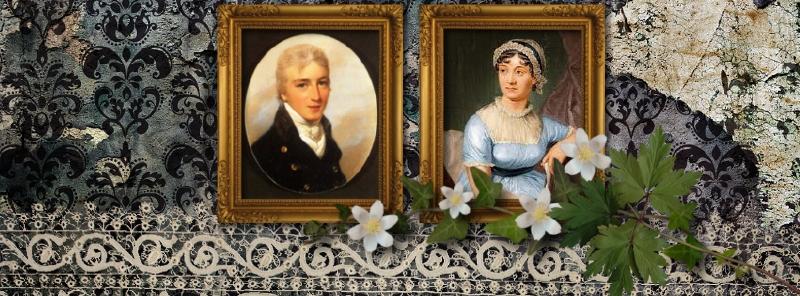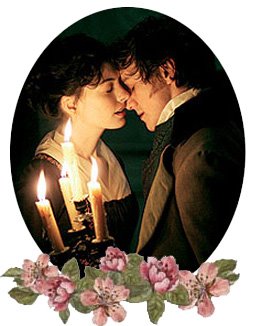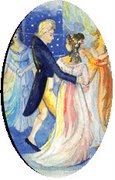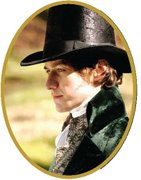Mrs. Barrett remembered…
 An episode of Jane Austen that we did not know sufficiently was, among others, the
An episode of Jane Austen that we did not know sufficiently was, among others, the
Dear Sir,
…I saw in the literary announcements of the autumn that you were engaged on a life of the incomparable novelist, Jane Austen; and I am tempted to tell you what I sincerely wish was better worth your attention.
I was on intimate terms with a lady who died a few years ago, Mrs. Barrett, whose maiden name was Turner or Edwards/…/Mrs. Barrett was no ordinary woman. She had read widely and wisely, and preserved that most rare of gifts, the power of entering fully into the tastes, ^and especially the intellectual tastes,^ of a younger generation than her own. She had enjoyed the friendship of some remarkable people; but I think I was more interested in hearing her recollections of the author of ‘Persuasion’ than in any other of the reminiscences she recalled. Most unfortunately for the purposes of your biography she had lost, through the carelessness of a friend, a series of letters from Miss Austen of great interest.
…
Mrs. Barrett declared that to a perfect modesty of a character she [JA] united a real judgement of her own powers, and that on the appearance of a good review (I almost think it was one by Archbishop Whately in the Quarterly, at one time printed among Sir W. Scott's miscellanies) she said, 'Well, that is pleasant! Those are the very characters I took most pains with, and the writer has found me out.'
To a question 'which of your characters do you like best'? she once answered, 'Edmund Bertram and Mr. Knightley; but they are very far from being what I know English gentlemen often are.'
The change of ideas as to clerical duty may be discovered in a fact mentioned by the same lady, that Miss Austen was once attacked by an Irish dignitary, who preferred a residence at Bath to his own proper sphere, 'for being over particular about Clergymen residing on their cures.' This was, of course, in allusion to the conversation of Bertram & Crawford in
I wish I had more to write. I often approached the subject, but 4 years have passed away since Mrs. Barrett died.
…Very truly yours,
G.D. Boyle
(Vicar of
Chapman (1949) explained that G.D. Boyle was indeed the Vicar of Kidderminster (starting in 1867) and subsequently became the Dean of Salisbury. Mrs. Barrett’s identity was rather enigmatic. However, Boyle said that she was ‘no ordinary woman’, and hence a reliable witness. Chapman proposed that Mrs. Barrett’s maiden name was Anne Sharp, occasional governess to Edward Austen’s children at Godmersham. Jane’s single surviving letter to Anne Sharp was dated
The ‘Jane Austen: A Family Record’ (Faye et al. 1989) mentioned that Mrs. Barrett was a woman Jane met in Chawton/Alton district circa 1813-1816. That made sense, for then Mrs. Barrett could talk of
Anyway, regardless of Mrs. Barrett’s identity, Mr. Boyle’s letter (and his recollection of Mrs. Barrett’s testimonies) was a nice confirmation that Anne Elliot was more or less Jane Austen herself. And that Jane loved Mr. Knightley best! Aaww… I also love Mr. Knightley best! And this one:
Miss Austen was once attacked by an Irish dignitary, who preferred a residence at Bath to his own proper sphere, 'for being over particular about Clergymen residing on their cures.'
Blimey. Did Jane know of an Irish 'dignitary' other than Tom Lefroy? Not that I know of... but I may be wrong...
And the fact that Jane actually talked about an Irishman with Mrs. Barrett! We have to remind ourselves that Tom Lefroy was already a famous lawyer in 1814; hence, a ‘dignitary’. If this Irish dignitary was indeed Tom Lefroy, Jane would not express her deep relationship with Tom, albeit a matter of past recollection. No, Jane would only talk of Tom with Cassandra, and Henry at the most. It is very likely that Jane just referred to Tom as an Irish dignitary she once knew that 'attacked' her (verbally, I suppose) while discussion clerical duties. This Irishman once resided in Bath (a holiday residence can still be called a residence, I guess), and he might like Bath better that time than 'his own proper sphere', which might means London or Ireland, particularly Limerick (duh! He had tons of responsibilities in
While discussing this letter, Linda explained to me that the later part of the sentence, 'for being over particular about Clergymen residing on their cures', might mean that either the Irish dignitary (i.e. Tom) or Jane herself (possibly Jane) suggested that a pastor should live in the parish where he served in order to better take care of his duty to the parishioners, and that the other party (possibly Tom) might not agree with it.
But the letter still adds to my suspicion. Provided that it was Tom Lefroy that Jane talked about, Tom might indeed visited
Reference:
Austen-Leigh, J. E. 1871, A Memoir of Jane Austen and Other Family Recollections (2002 Oxford edition), Oxford World's Classics, Oxford.
Chapman, R. W. 1949, 'Jane Austen's Friend Mrs. Barrett', Nineteenth-Century Fiction, vol. 4, no. 3, pp. 171-174.
Chapman, R. W. 1979, Jane Austen's Letters to Her Sister Cassandra and Others, 2nd edn, Oxford University Press, Oxford.
Faye, D. L. 1999, 'Jane Austen's Friend Mrs. Barrett Identified', Notes and Queries: Oxford Journals, vol. 46, no. 4, pp. 451-454.
Faye, D. l., Austen-Leigh, W. & Austen-Leigh, R. A. 1989, Jane Austen: A Family Record, The British Library, London.
Pic 1: Cover to Memoir of Jane Austen, Oxford Edition
Pic 2: Edmund Bertram comforting Fanny Price in Mansfield Park, from Pemberley
Pic 3: Chawton House, by Rachel Kingston
Pic 4: The Bath Abbey, Bath, from Wikipedia













































No comments:
Post a Comment